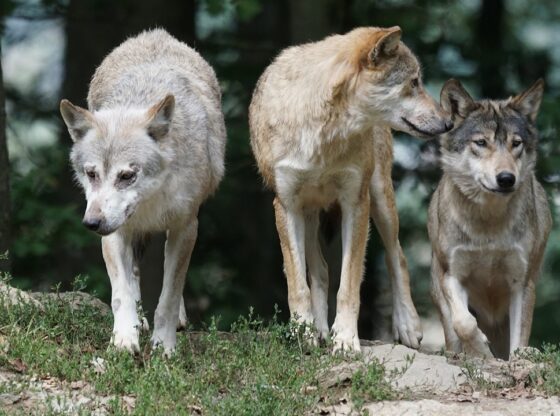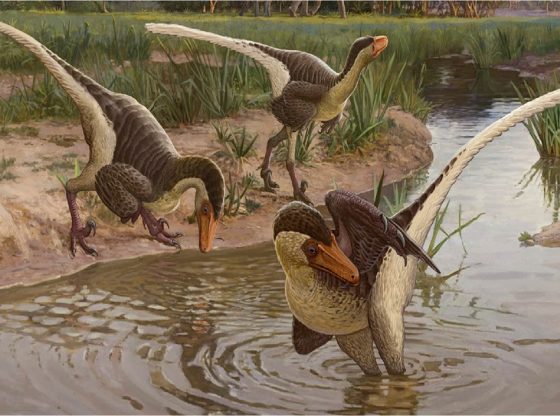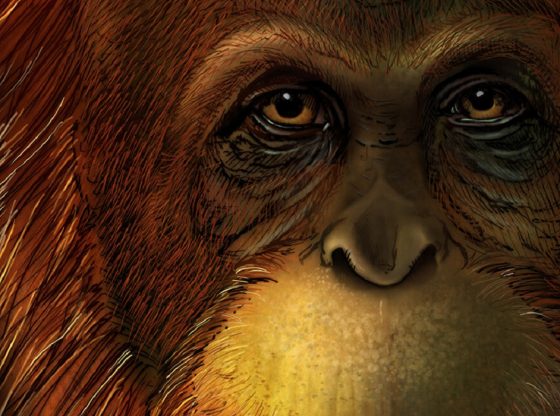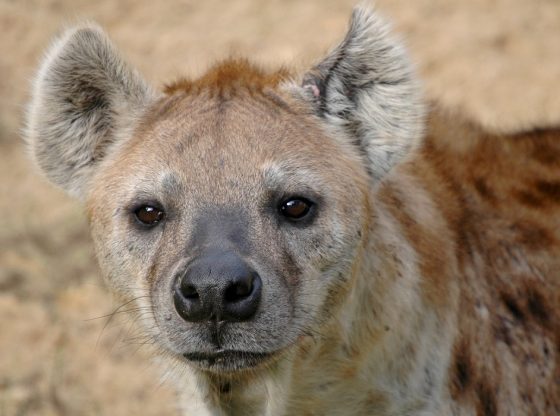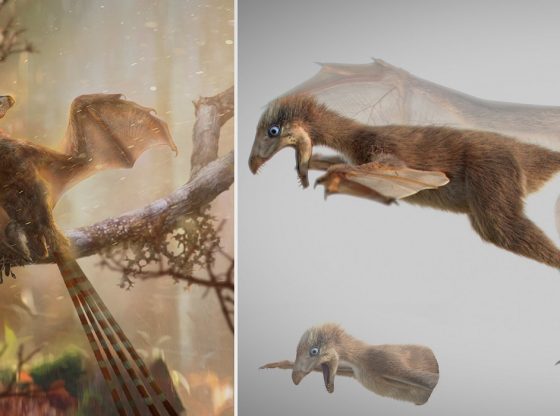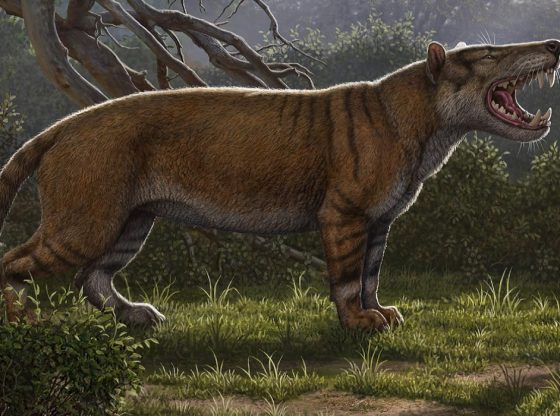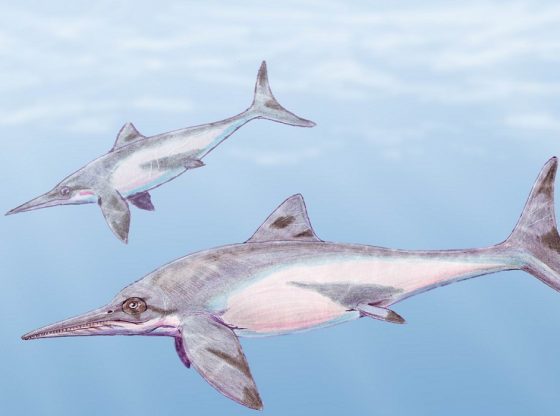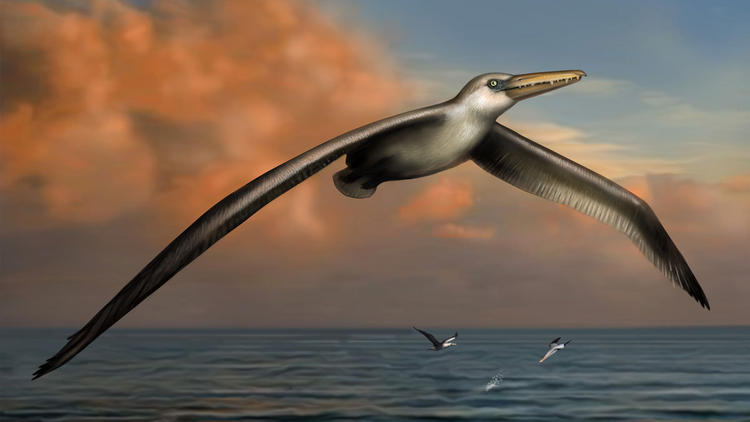
Quite recently the albatross birds, vultures, and storks were thought as being very close to the maximum physical size possible, allowed by physics, for flying birds. It was thought that birds with a wingspan beyond 5 meters (16 feet) and a weight of 20 kilos (44 pounds) simply could never have existed.
Scientists then made the discovery of the huge vulture Argentavis magnificent that lived six million years ago in southern South America. This bird had a wingspan of about 6 meters (20 feet) and may have weighed as much as 70 kilos (154 pounds). This finding made it clear that the present record holders are well below the maximum limit for flying birds.
Now scientists have made the discovery of another ancient giant bird in the United States. Named “Pelagornis sandersi”, it is proven to be the largest flying bird ever found. Only surpassed by the dinosaurs Quetzalcoatlus which had a wingspan of about 11 meters (36 feet).
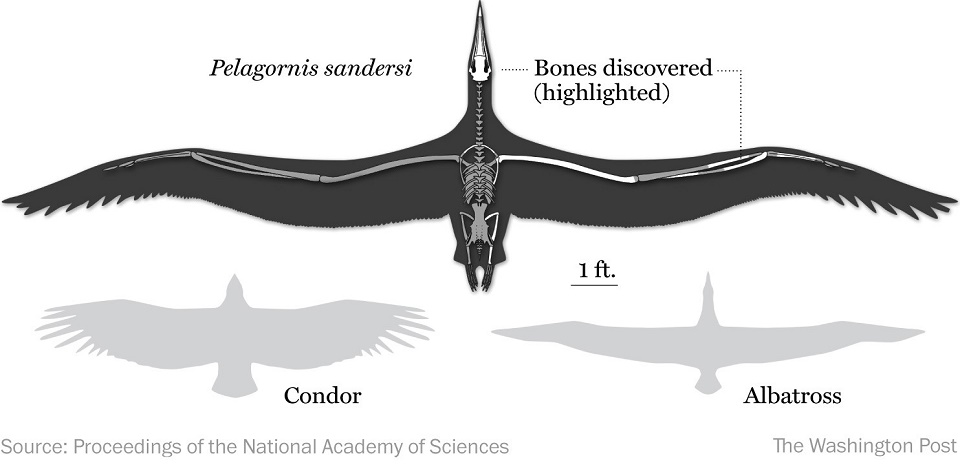
Pelagornis sandersi had a wingspan between 6 and 7.4 meters (20 – 23 feet), which is comparable to a small aircraft. An F16 fighter jet aircraft has a wingspan of 9,96 meters (32 ft 8 in).
The fossil remains of the bird were found in 1983 near Charleston in the U.S. state of South Carolina but have just now been examined more closely. It is believed to have lived during the Oligocene, around 25-28 million years ago.
It was truly an enormous bird, its head measured 57 centimeters (1,84 feet) and was longer than that of a horse. The bird was slenderly built with long narrow wings similar to that of an albatross, only it was at least double in size. A comparison to seabirds is probably reasonable since Pelagornis most likely also lived at and around the ancient seas. Also, its size may have implied it being unable to land on anything other than the water surface.
Perhaps you may ask yourself, why is there no similar giant birds alive today? No one knows for sure. But perhaps the size made this species very vulnerable. And probably the food productivity of the seas was higher during the time when this species thrived on Earth.
The findings have been published in the scientific journal the Proceedings of the National Academy of Sciences.
_______________
Flight performance of the largest volant bird
______________________________

